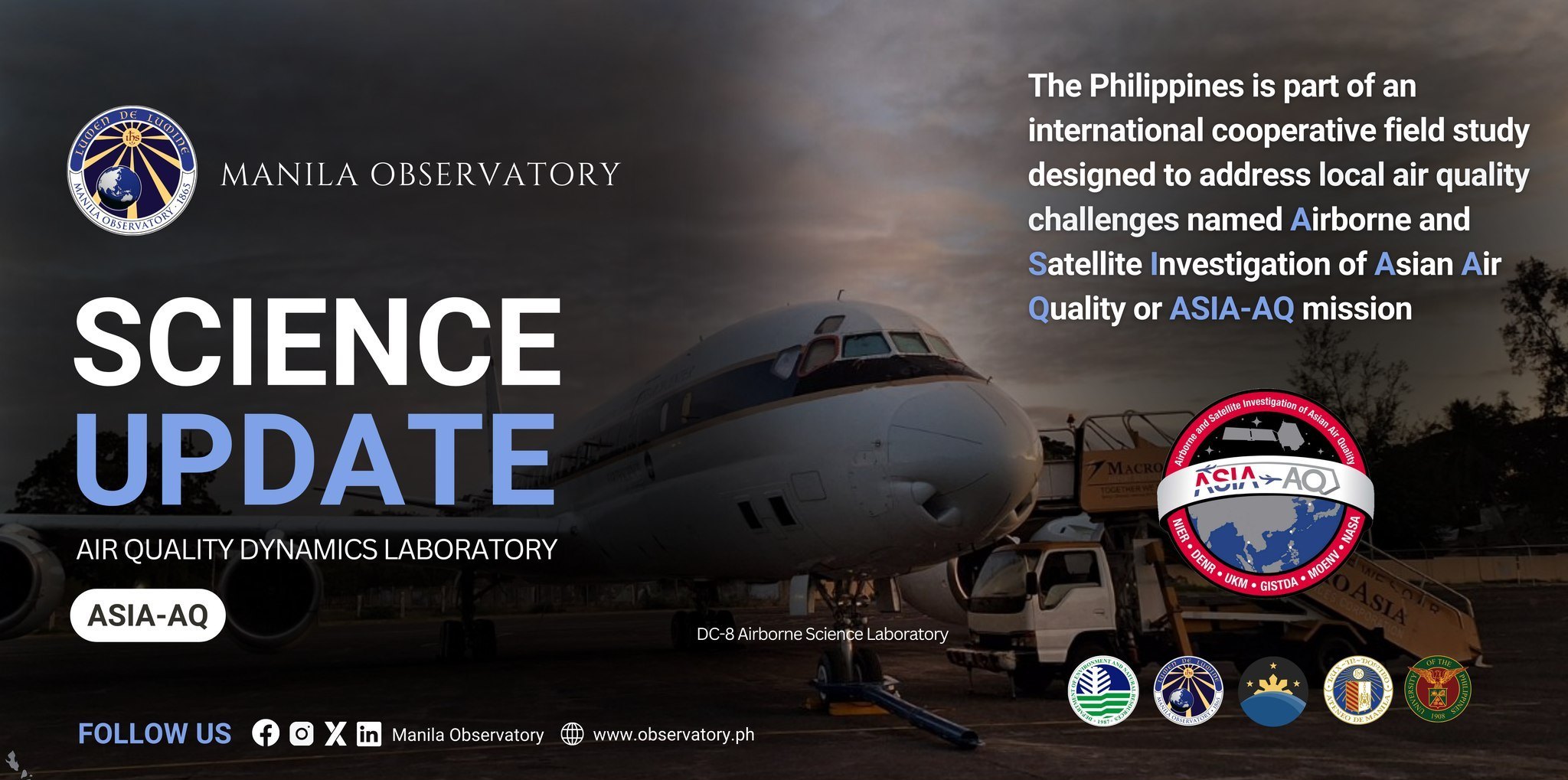

The Manila Observatory
is a private non-stock, non-profit, scientific research institution established in 1865 by the Jesuit mission in the Philippines. With Federico Faura at its inception, it was engaged in the systematic observation of Philippine weather.
READ MORE
The Manila Observatory
is a private non-stock, non-profit, scientific research institution established in 1865 by the Jesuit mission in the Philippines. With Federico Faura at its inception, it was engaged in the systematic observation of Philippine weather.
READ MORE
The Manila Observatory
is a private non-stock, non-profit, scientific research institution established in 1865 by the Jesuit mission in the Philippines. With Federico Faura at its inception, it was engaged in the systematic observation of Philippine weather.
READ MORE

The Manila Observatory
is a private non-stock, non-profit, scientific research institution established in 1865 by the Jesuit mission in the Philippines. With Federico Faura at its inception, it was engaged in the systematic observation of Philippine weather.
READ MORE
The Manila Observatory
is a private non-stock, non-profit, scientific research institution established in 1865 by the Jesuit mission in the Philippines. With Federico Faura at its inception, it was engaged in the systematic observation of Philippine weather.
READ MORE
The Manila Observatory
is a private non-stock, non-profit, scientific research institution established in 1865 by the Jesuit mission in the Philippines. With Federico Faura at its inception, it was engaged in the systematic observation of Philippine weather.
READ MORE


22°C
Manila
0

Rain (mm)
0

Preasure (hPa)
0

Wind Speed




















ASIA-AQ (Airborne and Satellite Investigation of Asian Air Quality) brings together international experts and agencies in other Southeast Asian nations to study air pollution in the region from space to the surface of the earth.
An all-women team of atmospheric scientists from the Manila Observatory, Dr. Obie Cambaliza, Dr. Melliza Templonuevo Cruz, and Paola Angela Bañaga, were on board the Gulfstream GIII Aircraft and DC-8 Airborne Science Laboratory during the second mission flight for ASIA-AQ last February 7, 2024.





